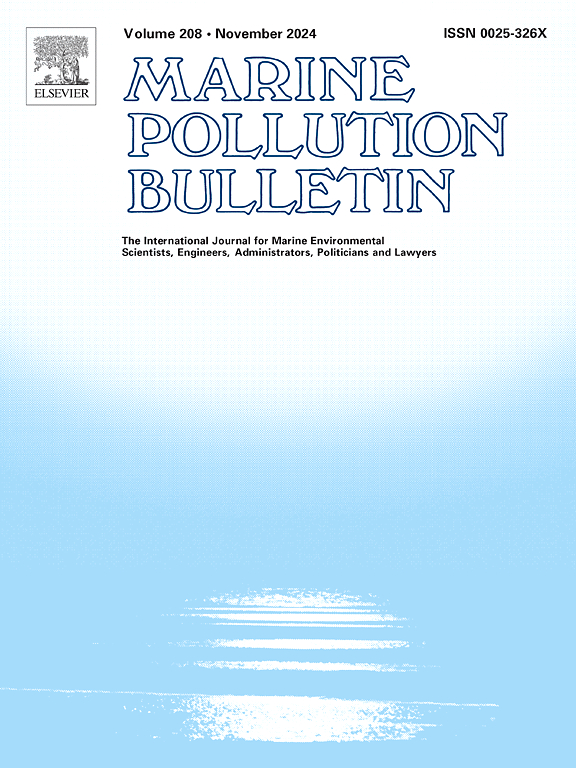老化聚乳酸微塑料与TCPP对贻贝胸椎基因的联合影响
IF 4.9
3区 环境科学与生态学
Q1 ENVIRONMENTAL SCIENCES
引用次数: 0
摘要
聚乳酸(PLA)虽然具有生物降解性,但在海洋环境中极易降解为老化的微塑料(MPs),而有机磷阻燃剂(OPFR)的代表——磷酸三氯二丙基(TCPP)已成为令人关注的海洋污染物。为评价其综合效应和生态风险,将PLA(未处理和老化浓度分别为0.2和1 mg/L)、TCPP (0.5 μg/L)及其组合暴露于贻贝14 d,分析了PLA、老化PLA、TCPP、TCPP + PLA、TCPP +老化PLA处理中与脂质相关的基因表达情况。分别暴露于1 mg/L的PLA和0.5 μg/L的TCPP均可抑制大网膜斑块相关基因的表达。随着PLA浓度的增加,老化PLA和TCPP对足跖骨的联合作用增强。我们的研究强调,尽管MPs是可生物降解的,但老化仍会增强其生态毒性。未来应该更加关注解放军的风险。本文章由计算机程序翻译,如有差异,请以英文原文为准。

The combined effects of aging polylactic acid microplastics and TCPP on the byssus genes of the mussel Mytilus coruscus
Polylactic acid (PLA), despite its biodegradability, readily degrades into aging microplastics (MPs) in marine environments, while tris(1-chloro-2-propyl) phosphate (TCPP), a representative organophosphorus flame retardant (OPFR), emerges as a concerning marine pollutant. To evaluate their combined effects and ecological risks, mussels were exposed to PLA (both virgin and aging at 0.2 and 1 mg/L), TCPP (0.5 μg/L) and their combination for 14 days, and the gene expressions related to byssus in PLA, aging PLA, TCPP, TCPP + PLA, TCPP + aging PLA treatment were analyzed. Exposed to 1 mg/L aging PLA or 0.5 μg/L TCPP alone suppressed the gene expression related to byssal plaque, respectively. Moreover, the combined effects of aging PLA and TCPP on byssus increased with increasing PLA concentration. Our study emphasizes that, aging would still enhance the ecotoxicity of MPs, even though they are biodegradable. Greater attention should be paid to the risks of PLA in the future.
求助全文
通过发布文献求助,成功后即可免费获取论文全文。
去求助
来源期刊

Marine pollution bulletin
环境科学-海洋与淡水生物学
CiteScore
10.20
自引率
15.50%
发文量
1077
审稿时长
68 days
期刊介绍:
Marine Pollution Bulletin is concerned with the rational use of maritime and marine resources in estuaries, the seas and oceans, as well as with documenting marine pollution and introducing new forms of measurement and analysis. A wide range of topics are discussed as news, comment, reviews and research reports, not only on effluent disposal and pollution control, but also on the management, economic aspects and protection of the marine environment in general.
 求助内容:
求助内容: 应助结果提醒方式:
应助结果提醒方式:


